Facts and myths about St. Patrick
March 17 - St. Patrick's Day - Irish national holiday, which is celebrated for many years all over the world. And recently at a meeting of the Holy Synod of the Danilov Monastery in Moscow, it was decided that the Russian Orthodox Church will celebrate the day of the saint every year on 30 March. In this review, the little-known and very interesting facts about this holy day is celebrated without much holiness.
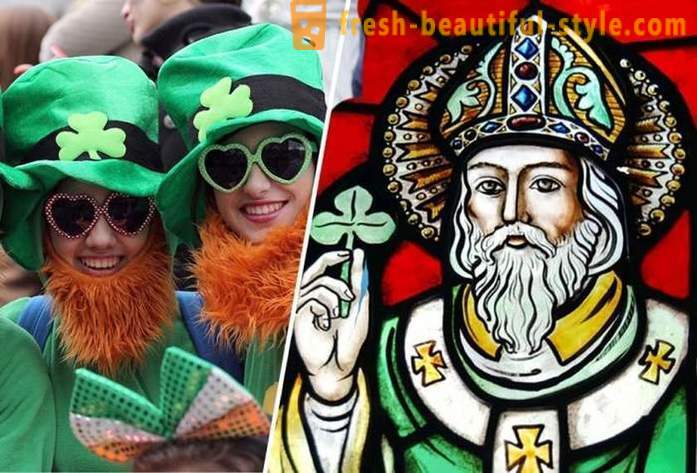
March 17 - the day of death
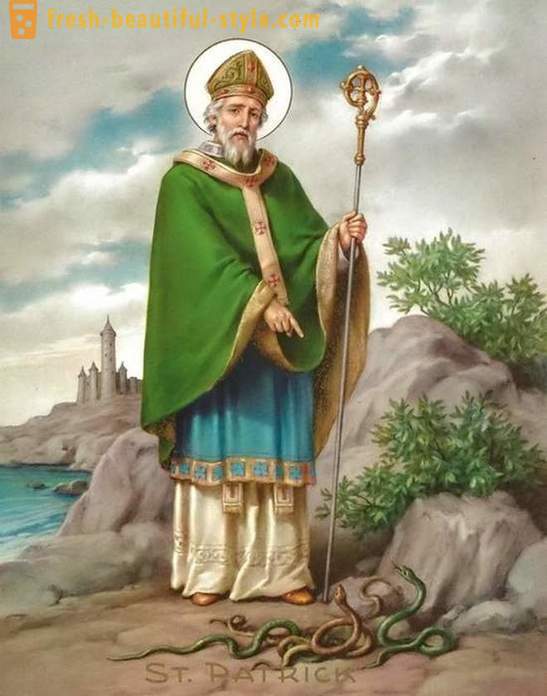
St. Patrick - holy Catholic Church, the feast is celebrated in honor of the day of his death and ascension to heaven, and not on the day of his birth. Most of his earthly life drew Patrick Irish pagans to Christianity. St. Patrick died on March 17 461 AD. e.
There was not an Irishman
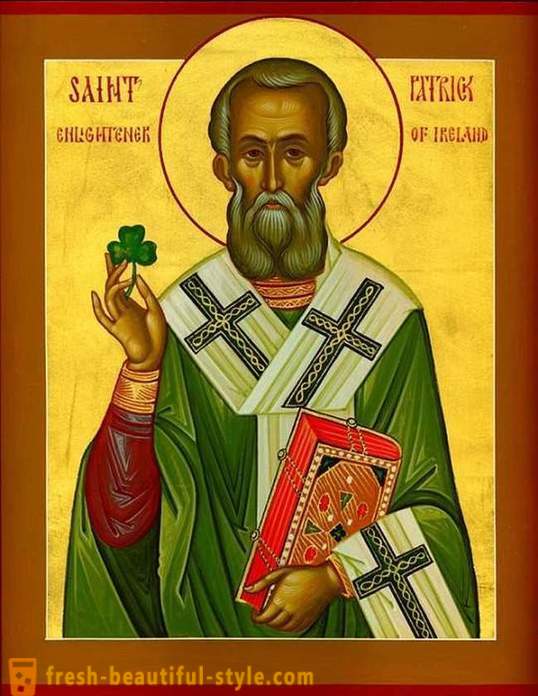
Although today St. Patrick is the patron saint of Ireland, he was not an Irishman, and not even been born on the Emerald Isle. Patrick's parents were Romans, and lived on the territory of modern England, to be precise - in Scotland or Wales (scientists can not agree on where it is). He was born in 385 AD. By that time, most of the Romans were Christians, and the Christian religion spread rapidly across Europe.
Slavery

At age 16, Patrick was kidnapped Irish robbers who sold him into slavery. He lived for several years in Ireland, sheep, and at age 22 he managed to escape. After that he came to the monastery in England, where he spent 12 years.
The shamrock - a symbol of the Holy Trinity
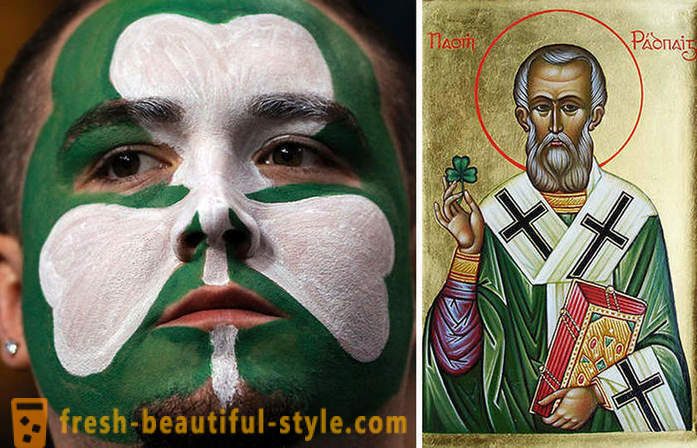
Many argue that the shamrock is a faith, hope and love, but it is actually used by Patrick, when he told the Irish about the Holy Trinity, so. E. The example of trefoil, he explained, as the Father, the Son and the Holy Spirit can be separate persons and simultaneously one. It is clear that Ireland's pagan rulers found Patrick convincing as quickly converted to Christianity.
The expulsion of the snakes from Ireland,

According to legend, St. Patrick drove all the snakes (or in some translations, "toad") from Ireland. In fact, there is no evidence that snakes ever existed in Ireland as there for them too harsh climate. Some scholars suggest that the term "snake" can be shaped, and to refer to pagan religious beliefs and practices.
Do not ... Green Blue!
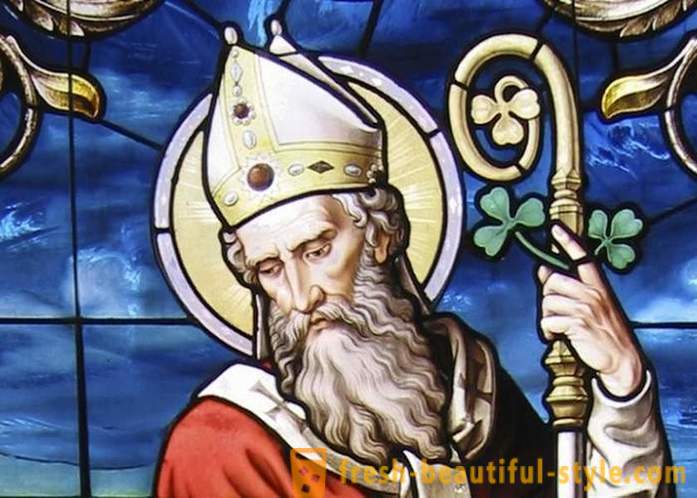
In fact, the Holy Patrick associated the color blue, not green, as is commonly believed. On a number of works depicting the saint, you can see his blue clothes. King Henry VIII first used as an Ireland flag golden harp on a blue background. Since that time, the blue has become a symbol of the country.
Green began to be associated with the country much later, presumably because of its green scenery (in Ireland is very high rainfall). Today, the country is also known as the "Emerald Isle".
The shamrock is not a symbol of Ireland
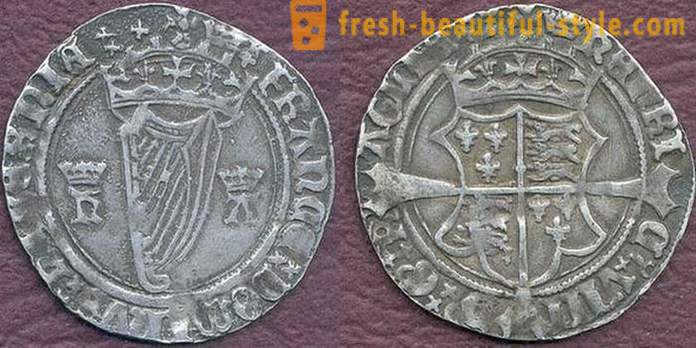
Shamrock - popular Irish symbol, but it is not a symbol of Ireland. Already in the Middle Ages to the Irish tombs and manuscripts appeared an image of a harp. However, scientists believe that the harp was popular in Irish legends and culture, even long before that period. In the medieval period symbolized the harp of Ireland.
King Henry VIII used the image of a harp on coins already in 1534 Later, the harp has been used on the Irish flag and Irish emblems. The harp was also used as a symbol of the Irish people during their long struggle for freedom. When Ireland became an independent country in 1921, the harp became a national symbol.
In the United States over the Irish than in Ireland

It is estimated that about 34 million Americans have Irish roots. Some of them are purebred Irish, that is, they or their parents came from Ireland, but many more people have mixed ancestry today. In Ireland itself live all 4, 2 million people.
The reason is "potato famine" in Ireland, when millions of Irish people left the country, emigrating to the United States. Irish relocation lasted for the better part of the XIX century.
St. Patrick's Day in Russia
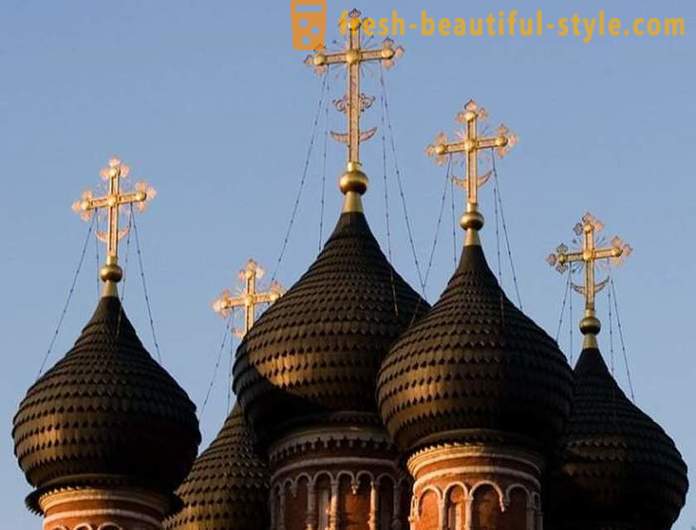
By the way, this year, too, the Russian Orthodox Church has decided to celebrate St. Patrick's Day. But not today, and on 30 March (the 17th by the old calendar). For Orthodox believers have a new holiday for Lent. However, the Church suggests that this day people would not dance and drink and still attend services and pray. Archpriest Alexander Sorokin, chairman of the Information Department of the St. Petersburg diocese, rector of the cathedral in Feodorovsky solder the 300th anniversary of the Romanov House "St. Patrick, St. Patrick - Slavonic. The veneration of the saint in the Orthodox Church did not start today. And not even the day before. A very long time ago, when our church is still made up a whole, the eastern and western churches. "
March 17, until 1970, did not drink

In addition to the green, St. Patrick's Day is associated with alcoholic libations. However, in Ireland from 1903 to 1970, St. Patrick's Day is a religious holiday. All the pubs were closed for the day. It was abolished in 1970, when St. Patrick's Day has been classified as a national holiday.













































